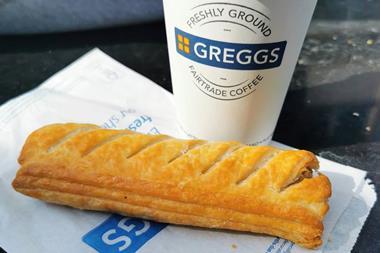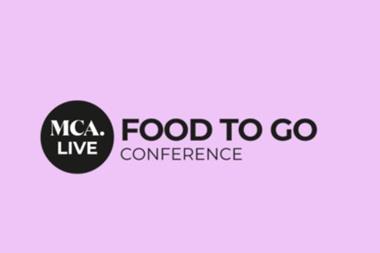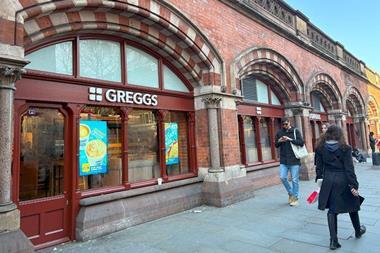Low-ticket launches have remained remarkably resilient in an increasingly volatile eating-out market. Gareth Nash analyses the data to see which brands are doing it right.
For sheer number of occasions, there is no bigger out-of-home meal market than that of low-ticket lunches. At what is the biggest out-of-home meal time, two fifths of lunches are bought for under £5, a further third for £5-£9.99 and only a quarter for £10 or more. Lower spend lunch visits also tend to be based on regular routine, or less discretionary work, study or shopping-based missions.
This helps explain recent trends from MCA’s Eating Out Panel, which show consumers cutting back on higher spend evening meals and treat-fuelled breakfasts and snacks, but with lesser impact on lunch.
So, who are the top performers in this substantial and increasingly important battle for cheap eats? The top 10 players by share of sub-£5 lunch occasions that, in the UK, comprise three fast-food chains, three supermarkets/c-stores, two sandwich retailers, one coffee shop/café brand and independent cafés.
Together this top 10 accounts for close to half of all occasions, with McDonald’s and Greggs top of the pack with shares of 11.3% and 10% respectively. Yet, no operator beyond the top 10 holds a share higher than 1.5%, reflecting how this is not only the biggest out-of-home meal occasion, but also the most competitive.
Barriers to entry are low, and operators can get by with a smaller footprint than is feasible in higher spend markets. The list of market players, therefore, is broad, fragmented and multifaceted, including brands and independent concepts from a variety of channels.
There is obviously no single recipe for success in such a competitive marketplace, but by delving deeper into the Eating Out Panel data, we can better understand what drives customers to visit the leading players.
There are three critical success factors – convenient location, cheap prices and fast service. It is these factors, and in this order, that over-index most as decision drivers for where to buy a sub-£5 lunch, compared to out-of-home lunches overall on average.
We can compare the performance of the top 10 operators and some of their direct rivals in these three key areas, both in terms of how important they are as reasons for visiting and also how highly they are rated.
For the No.1 low-ticket lunch operator, McDonald’s, speed of service is a particular driver of customer appeal. Aided in part by its new digital ordering kiosks, 44% of visits to the fast-food giant are influenced by expectations of fast service, double the market average and well ahead of key rivals. Second-ranked Greggs, meanwhile, performs strongly in all three critical success factors. The convenient locations of Greggs sites are of particular appeal, with the brand’s 8.8 average rating for this the highest achieved by any leading brand in any key performance indicator on a sub-£5 lunch visit.
C-store competition
McDonald’s holds a much clearer lead over the rest of the leading players in the capital, with its 11.7% share almost five percentage points higher than any other brand.
The London targeting of Pret A Manger and Starbucks is clear by their presence in the top 10 here, but there is plenty of potential for Greggs to target a higher share of London visits, with the second ranked brand in the total UK ranking just fifth in the capital city, one place lower than rival sandwich chain Subway.
However, the biggest point of difference in London is the competition from convenience stores, with Tesco and Sainsbury’s ranking second and third. The impact of rising c-store numbers, especially in central locations, is highlighted further by the presence of three grocery retailers in the top 10 leader board for sub-£5 out-of-home lunches in the UK.
Tesco is the highest ranked, in fourth place, with a 6% share of occasions, followed by Sainsbury’s but with just half the share. As the c-store label would suggest, it is the convenient locations of the grocers that is most vital in attracting customers for sub- £5 lunches, driving 91% of trips to Co-op, 82% to Tesco and 79% to Sainsbury’s.
Promotions, particularly meal deals, are also a key factor. An eighth of sub-£5 lunches are bought on a deal, but this increases to a sixth for those bought from a supermarket/c-store to-go. Looking at the importance of meal deals specifically, these account for under a third of all sub-£5 lunches bought on deal, but rising to two thirds in supermarkets/c-stores.
So, the meal deal has certainly been crucial to the lunch to-go success of grocery chains such as Tesco and Sainsbury’s, but has also created a difficult challenge for them. A psychological price ceiling built up among customers, used to buying meal deals for £3 or less, severely restricts the potential to increase prices and the overall value of these occasions, and has led to some specification re-engineering and some reduction in product quality.
Room for coffee improvements
Costa Coffee is the only coffee shop/café chain to make the low-ticket lunch top 10, in sixth spot, but its 2.2% share of occasions is only a fifth of the leading brand, McDonald’s. There is plenty for Costa and the other big coffee-shop chains to work on if they are to gain popularity on these occasions, with only Starbucks rated higher than average in any of the critical success factors – fast service.
It is independent cafés that impress most, in total accounting for a similar share of visits as Costa and scoring ahead of all big-three coffee shop chains in the three key factors identified for sub-£5 lunch success.
Independents have greatest appeal for their convenient locations, the biggest driver of footfall in this market, with an 8.9 average rating that outscores all of the top brands.
Importance of value market
So, within what is a very fragmented eating-out market overall, it is the low spend lunch segment where competition is most fierce. An extensive array of brands and independents, from a variety of channels, all blur into a single competitive set.
A tough task to succeed in this market then, competing with an extensive collection of opponents for a price conscious consumer, especially as cost pressures bite. Yet, in the face of increasingly uncertain consumers, cutting back on some of their higher spend and more discretionary occasions, this cheap eats market is going to continue to be of vital importance and, for many, also a growing area of focus.
Gareth Nash is MCA’s head of consumer insight











































